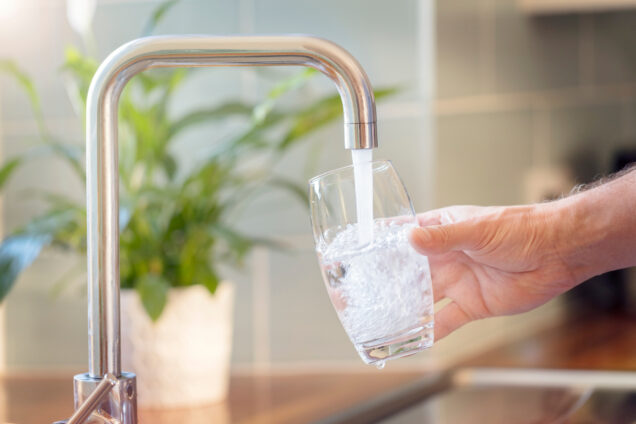In your home’s plumbing system, backflow can jeopardize the purity of your water supply. This reverse flow of water, if left unchecked, poses potential risks to your home’s plumbing system.
There is one very important component that works to ensure your potable water supply remains untainted—the backflow preventer. Mission Mechanical explains how backflow preventers work and why it’s important to have one installed in your home.
What Is Backflow?
Backflow in a plumbing system refers to the unintended reversal of water flow, where water travels backward through the pipes and plumbing fixtures, posing a serious risk of contaminating the clean drinking water supply.
This phenomenon occurs when there are pressure changes in the main water supply line, creating a potential vacuum that allows dirty water from various sources to flow back into the plumbing. This backflow can introduce harmful substances, pollutants, or bacteria into the plumbing system, posing a direct threat to the quality of water used for drinking, bathing, and everyday activities.
Various plumbing fixtures and systems in homes and commercial properties can be potential sources of backflow, creating the risk of contaminating the potable water supply.
- An irrigation system can cause backflow incidents. Contaminants from fertilizers or pesticides used in landscaping can be drawn back into the home’s water supply.
- Connecting hoses to a hose bibb can pose a risk of backflow.
- Fire sprinkler systems are essential for safety, but they can pose a risk if not outfitted with a backflow prevention device.
- Boilers and heating systems connected to the water supply, if not properly configured and protected, can lead to backflow.
Understanding the Backflow Preventers
A backflow prevention system is a vital component in your plumbing system designed to halt the unwanted reversal of water flows. In simpler terms, it prevents contaminated water from flowing back into the clean water supply. Picture it as a gatekeeper, ensuring that water only flows in the intended direction—towards your faucets and appliances, not back into the supply lines.
The Mechanism at Play
To comprehend the magic behind a backflow preventer, let’s delve into its inner workings. At its core, this device operates on a basic yet ingenious principle—pressure. There are various types of backflow prevention assemblies, each tailored to specific applications, but they all share the common goal of maintaining a pressure differential that safeguards against backflow.
Double Check Valve Assembly
Consisting of two independently-acting check valves, the double check valve assembly device is strategically placed in the plumbing lines to prevent the backward flow of water. The check valves permit water to flow in one direction, but should there be a drop in water pressure or an unexpected change in the system, they promptly close, creating a reliable barrier to prevent backflow.
This double check valve assembly ensures redundancy, enhancing the reliability of the backflow preventer. The double check valve configuration is particularly effective in situations where there is a moderate risk of contamination.
Atmospheric Vacuum Breaker
An atmospheric vacuum breaker backflow prevention assembly is installed at key points in the plumbing. These backflow prevention devices rely on atmospheric pressure to prevent the reverse flow of water. When water is flowing normally, the vacuum breakers remain open, allowing water to pass through. However, if there is lower pressure or a potential backflow threat, the atmospheric vacuum breaker seals shut, creating a barrier that prevents contaminants from entering the clean water supply.
Pressure Vacuum Breaker Assembly
A pressure vacuum breaker backflow preventer serves as a vigilant guardian in a home’s plumbing system, defending against back pressure. This backflow prevention device is strategically installed at vulnerable points in the plumbing to maintain the integrity of the water supply.
Operating on the principle of water pressure differentials, the pressure vacuum breaker remains open during regular water flow. However, if reduced pressure occurs, signaling a potential backflow situation, the device swiftly closes to prevent contaminated water from flowing backward.
Why Install Backflow Preventers?
Why is it essential to have a backflow preventer installed in your home? Here are a few key reasons:
Protecting Water Quality
Water is a precious resource, and ensuring its purity is paramount. A backflow device acts as a barrier, shielding your home’s water supply from pollutants, chemicals, and other contaminants that may infiltrate the system.
Preserve Health and Safety
By mitigating the risk of cross-contamination, backflow preventers contribute to the overall health and safety of your household, protecting against waterborne illnesses.
Compliance with Regulations
Many municipalities and water authorities mandate the installation of backflow preventers to adhere to stringent safety standards. Failure to comply can result in fines and penalties, making it imperative to invest in this safeguard for both your well-being and legal compliance.
Preserving Appliance Longevity
Appliances like dishwashers and water heaters are significant investments. Backflow preventers play a role in extending the lifespan of these appliances by preventing contaminated water from damaging their internal components.
Insurance Against System Breaks
A backflow prevention system acts as a crucial insurance policy during system breaks, repairs, or maintenance, ensuring that water flows unidirectionally, preventing damage and contamination.
Safeguard Your Home Today
Protecting your home from the risks of backflow is not just a matter of convenience—it’s a fundamental step towards ensuring the health and well-being of your family. Take the proactive step towards fortifying your home’s plumbing—contact us today to schedule your backflow preventer installation in Indianapolis, IN.




